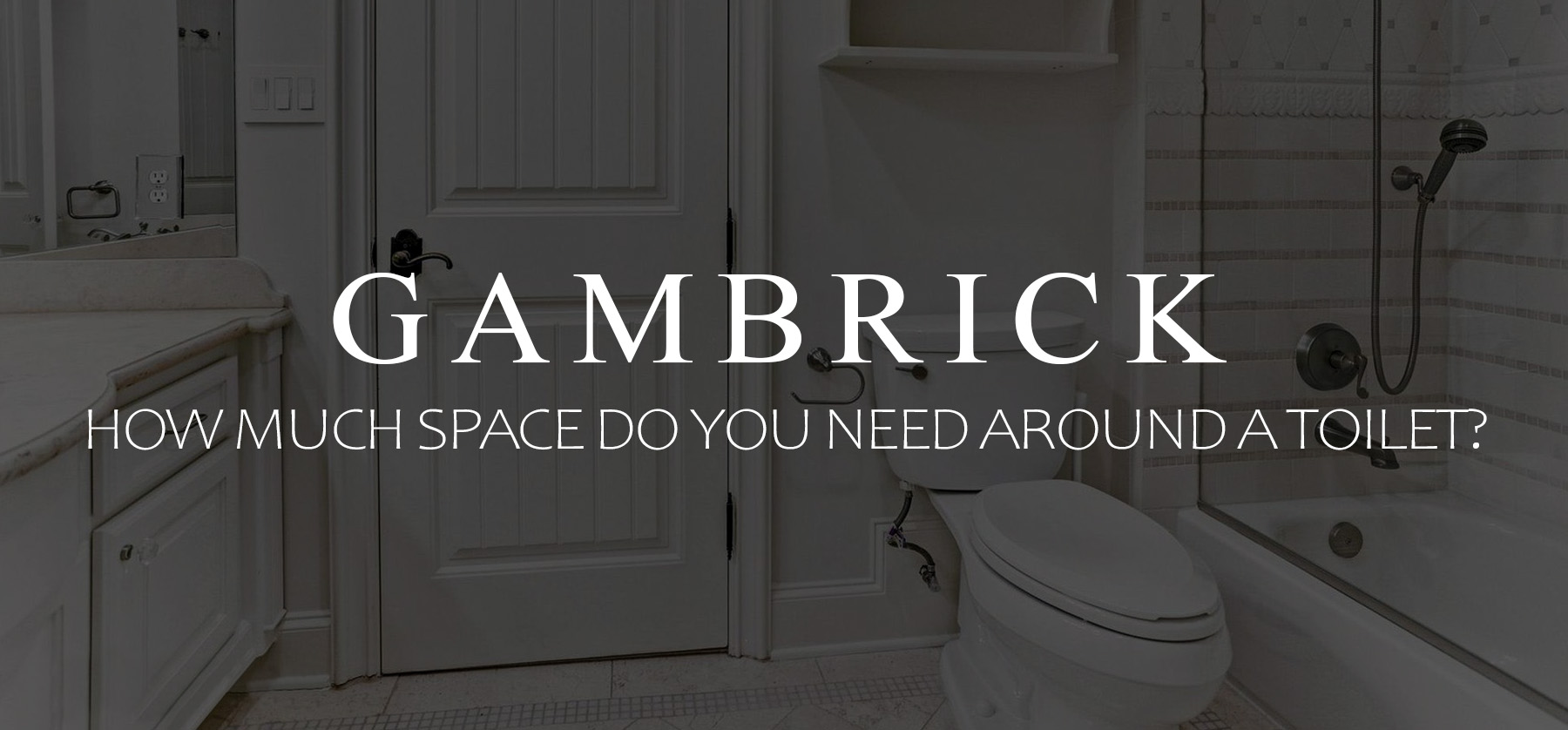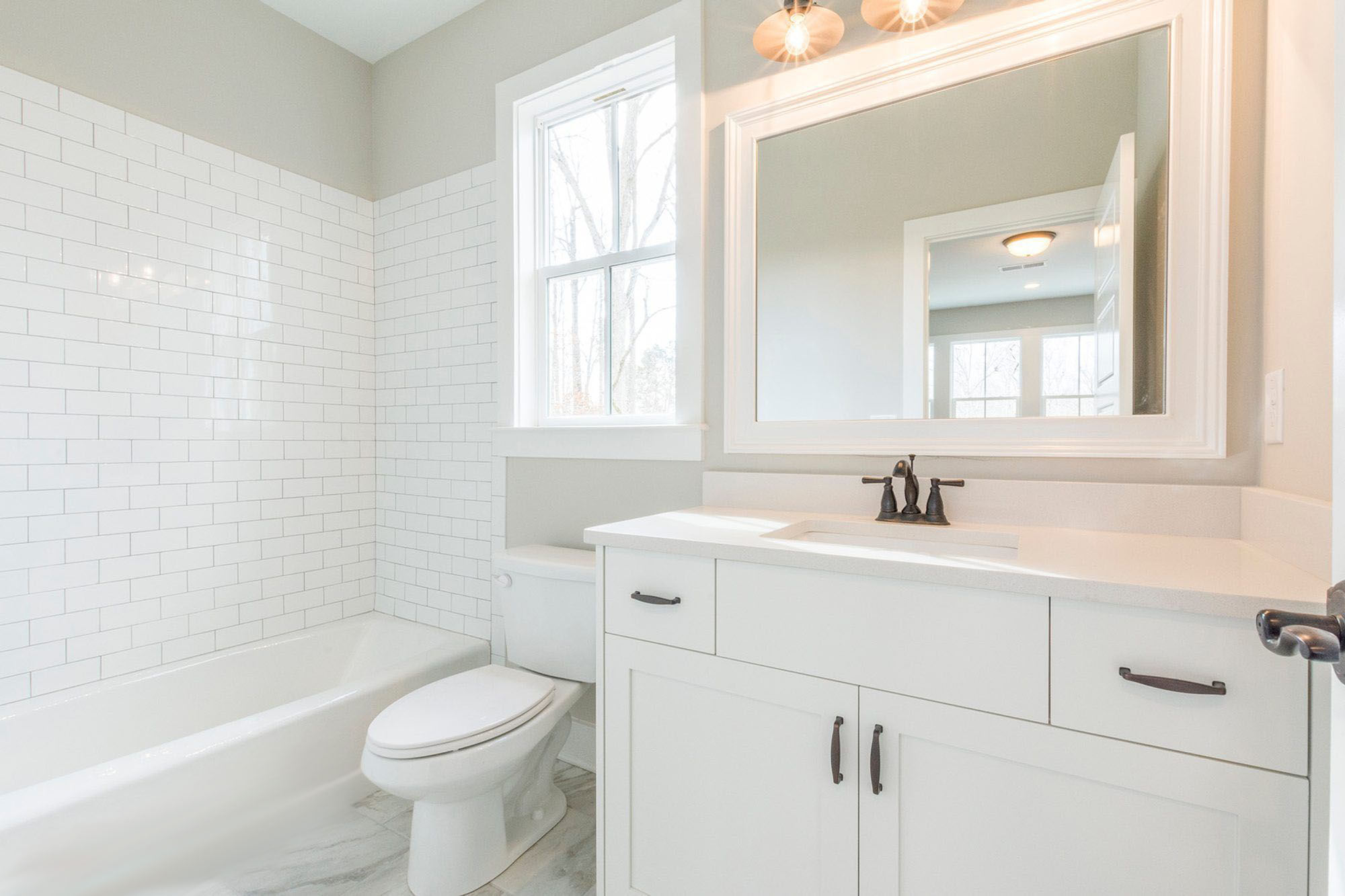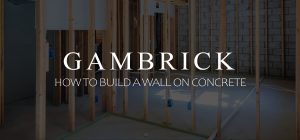How Much Space Do You Need Around A Toilet?
If your remodeling a bathroom or designing one for a new home then positioning your toilet is one of the most important decisions you’ll make. Everyone always wants to jump ahead and start picking tile, fixtures, colors, trim and cabinetry. But the first step in designing a bathroom is the layout. And we always start with the toilet. So how much space do you need around a toilet?
The area around the toilet is very important to get right because it’s a code issue. There are codes that dictate how much room you need to either side and in front of the toilet. If you want the bathroom design to be legal then the layout is very important. Especially if the bathroom is small. The toilet position is one of the main factors that determines where everything else in the bathroom goes. You can eliminate things like a shower or tub from the bathroom and it’s still a bathroom. But the one thing you absolutely have to have is the toilet. And it’s location effects other very important things like drains, vents and water lines. Then there are other concerns like the type of toilet you’ll be using because they come in different sizes. It’s a lot to consider.
In this article we’ll go over how much space you need around the toilet as well as some guidelines we use when designing a bathroom.
What Are Space Requirements
A toilet needs to have unobstructed space in front of it and to both sides. These requirements prevent things from getting too close to the sides and front on the toilet.
In addition, the waste floor drain needs to be a fixed distance from the back wall. The drain position is very important to get right because if it’s too close to the wall then the toilet won’t fit.
You also need to rough in the water supply line and a shutoff valve. We won’t be going over plumbing requirements in this article, but it’s another thing you have to consider. Especially if your doing the plumbing work yourself.
Building codes require a minimum clearance to the side and front of the toilet that you must abide by if you want your bathroom to be legal. In addition to local codes, the National Kitchen and Bath Association (NKBA) publishes guidelines that expand on the code requirement to make bathrooms more comfortable. We try to use these guidelines because we want our bathrooms to be not only legal but also a comfortable space. Generally speaking the bare minimum code requirements here in New Jersey tend to be a little tight.
If you’re designing a handicap accessible bathroom, you need to refer to the standards for accessible design established by the Americans with Disabilities Act. The Act expands the space needed for a toilet even more and adds some other safety equipment like graspable hand rails. This article does not cover ADA requirements. Go to ADA.gov to learn more about those.
Pro Tip: Always check with your local building department on code requirements. The measurements and sizes we talk about here are general guidelines and may not comply with your local codes.
Toilet in a full bathroom. Minimum 15 inches are required from the center of the toilet to the vanity and 15 inches from the center of the toilet to the wall.
Minimum Space Requirements For A Toilet
The amount of space needed for a toilet depends on whether you’re just following code, which requires the minimal clearances, or whether you’re adhering to NKBA guidelines for comfortable design. We recommend NKBA guidelines if you have the space.
When you’re designing a bathroom and laying out all the elements that have plumbing, you have to reference your local building code. This is usually based on the International Residential Code (IRC) and the International Plumbing Code (IPC) or Uniform Plumbing Code (UPC). These codes govern the clearance around the toilet and other things in the room.
A good plan is essential. Don’t start roughing the bathroom until you have a plan that would pass a code review. If your getting permits, and we recommend you do, then your plan will have to be reviewed and approved by the building department.
Both the residential building and plumbing codes have the same requirements:
- A minimum clearance in front of the toilet of at least 21 inches. This is required for all your bathroom fixtures, including the shower, vanity or sink and bathtub.
- A minimum distance from the center of the toilet to both side walls of 15 inches. When designing the area your toilet will sit, you must provide a floor space that is at least 30 inches wide and 60 inches long.
- A minimum spacing between the center of adjacent fixtures of 30 inches. This code has to do with other fixtures near the toilet, things like a bidet.
Pro Tip: Remember that the code approved distance is to the finished wall and not the rough stud. So if the drywall hasn’t been installed and you’re measuring to the framing, don’t forget to add the drywall thickness. We usually use 1/2 inch in the bathroom. On paper, you need to make sure you note 15 1/2 inches from the center of your toilet to the stud.
The head on clearance is measured from the front of the toilet and not the drain. This is effected by the toilet you buy so make sure you choose a toilet first or get one that works within the code requirements later. If you install a really long bowl but only have space for a round one then you may not pass inspection.
Full bathroom with a single sink vanity, toilet and bath/shower combo.
NKBA Clearance Recommendations
The bathroom code requirements provide just enough space to use the toilet. The spaces are tight and generally work well even for a small bathroom, but they’re not ideal. I recommend you use the NKBA guidelines if you can.
The guidelines that I like to use in my bathroom designs around the toilet are the following:
- Clearance in front of the toilet is 30 inches. This gives a more comfortable amount of leg room and allows for a longer toilet. You never know how tall someone is who may be using the toilet so I like to have as much room as possible in front of the bowl.
- Distance from the center of the toilet to the side wall is increased to 18 inches.
- Distance between the center lines of my fixtures is increased to 36 inches.
Although the NKBA guidelines are not requirements and seem just a little bit bigger than code, it’s a big difference in how they feel. I want my bathrooms to be a comfortable space to use and even just a few extra inches around the toilet can make a difference.
Keep in mind that even these NKBA guidelines are just a guide. And even though the measurements apply to a master bathroom too they’re used mainly for small baths. Master bathrooms generally have lots more room so minimum clearances are rarely an issue.
What’s The Toilet’s Center Line
Spacing guidelines for toilets are measured from the center of the bowel which is often referred to as the center line.
Center line means drawing an imaginary line down the center of the fixture. This basically splits the toilet in half with the drain in the center. We use center line toilet measurements that are side to side and not front to back.
The front spacing guideline is measured to the tip of the bowel to the wall. This has nothing to do with center line so don’t get them confused. If you measure your front setback to the center of the bowel you’ll come up way too short.
Full bathroom with a single sink vanity, elongated toilet and tub/shower combo.
Bowl Shape Differences
Toilets come in different shapes which can complicate things a little bit when your laying out the bathroom.
Elongated bowls are typically considered more comfortable, but rounded bowls take up less space. In general, round bowel toilets extend 25 to 28 inches from the wall. Elongated bowel toilets extend 29 to 31 inches. Because most bathrooms have an in swing door when space is tight every inch counts. For this reason elongated toilets are used more in master or large baths and round bowels in small bathrooms.
I recommend choosing specific fixtures when your designing a small bathroom. Every inch really does count when space is tight so a difference of an inch or two can matter. If the bathroom is large then you probably don’t even have to consider an extra inch of bowel length but that’s a luxury. Most homes have small bathrooms. Especially older homes. Toilets have gotten slightly larger over time so if your doing a bathroom renovation in an old home then be aware that the old toilet may have been smaller than what your used too so the location may need to be adjusted for a modern toilet.
Should I Just Follow The Guidelines?
When I design a new bathroom layout I look at the guidelines as a guide. The code requirements are a different story. You have to abide by those in order for your bathroom layout to be legal. But to me they’re all too small. Even the NKBA recommendations feel a little small to me. If you’ve got a really small space then there’s nothing you can do. And honestly most people fall into this category if your remodeling. Unless you can make the room bigger there’s not much you can do. But if your designing a new home or renovating a home to the studs then you can make changes.
In this case I recommend going a bit bigger on everything. The sides of the toilet aren’t that important to me so 16 – 18 inches on from center line is fine. But in front of the toilet I like to have room. In this case 24 – 30 inches is usually what I like to use. What I want is enough space to walk in front of the toilet comfortably if I have to.
I also prefer the round bowel. I think they look better and are comfortable enough. I’ve never had anyone complain about them. Modern toilets tend to be bigger anyway. The old fashioned round bowels were a little small but new models are nice. This helps me with my bathroom designs because a round bowels buys me a couple inches in the front.
Modern style bathroom with a single sink vanity, toilet and walk in shower.
How Far Should A Toilet Be From The Wall?
Another dimension to consider when laying out your bathroom is how far the waste drain needs to be from the wall. This varies a little by toilet but in general we figure 12 – 14 inches from the finished wall to the center of the drain.
Remember to measure from the finished wall and not the stud. If you measure from the stud and then add drywall, tile or wall paneling your toilet could be too close to the wall or not fit at all.
Also remember to measure to the center of the drain and not the edge.
Summary: How Much Space Do You Need Around A Toilet?
If your remodeling a bathroom or designing one for a new home then positioning your toilet is one of the most important decisions you’ll make. Everyone always wants to jump ahead and start picking tile, fixtures, colors, trim and cabinetry. But the first step in designing a bathroom is the layout. And we always start with the toilet. So how much space do you need around a toilet?
The area around the toilet is very important to get right because it’s a code issue. There are codes that dictate how much room you need to either side and in front of the toilet. If you want the bathroom design to be legal then the layout is very important. Especially if the bathroom is small. The toilet position is one of the main factors that determines where everything else in the bathroom goes. You can eliminate things like a shower or tub from the bathroom and it’s still a bathroom. But the one thing you absolutely have to have is the toilet. And it’s location effects other very important things like drains, vents and water lines. Then there are other concerns like the type of toilet you’ll be using because they come in different sizes. It’s a lot to consider.
If you have any questions or comments e-mail us any time. We’d love to hear from you.

























